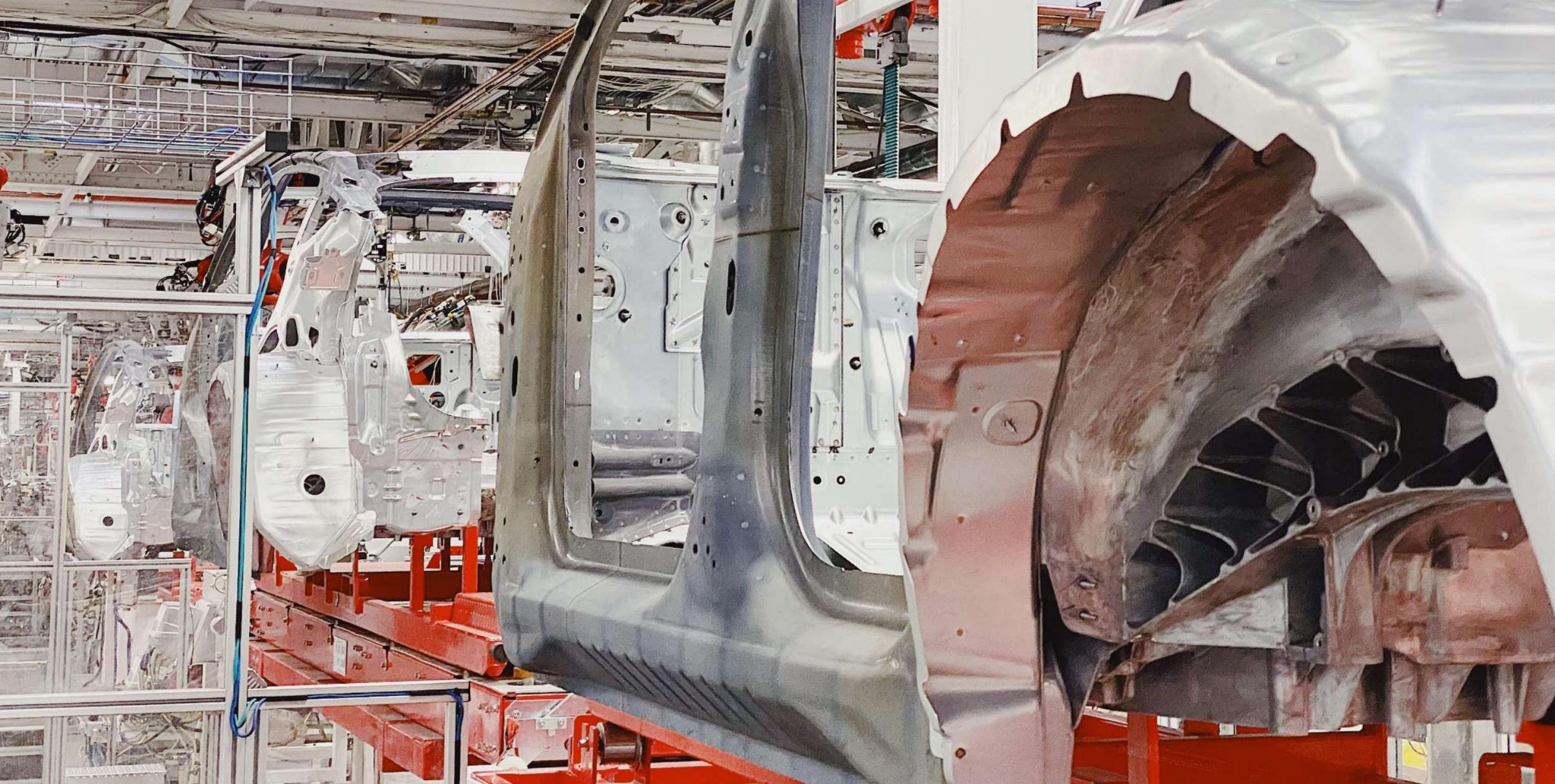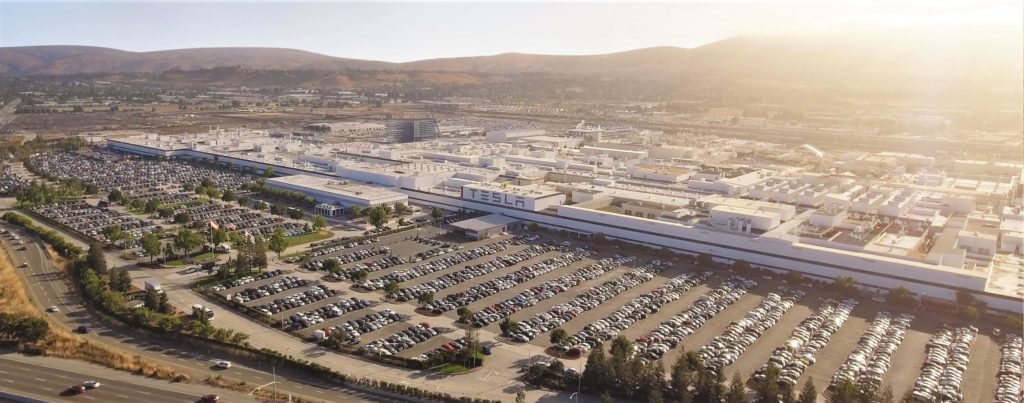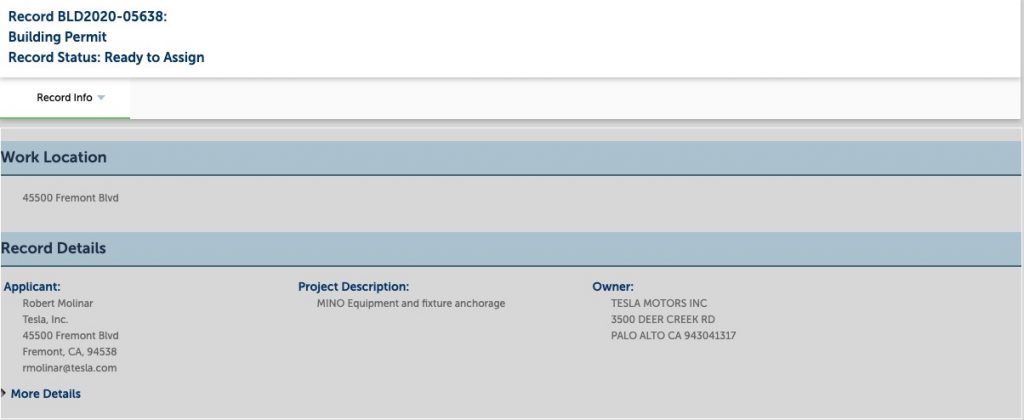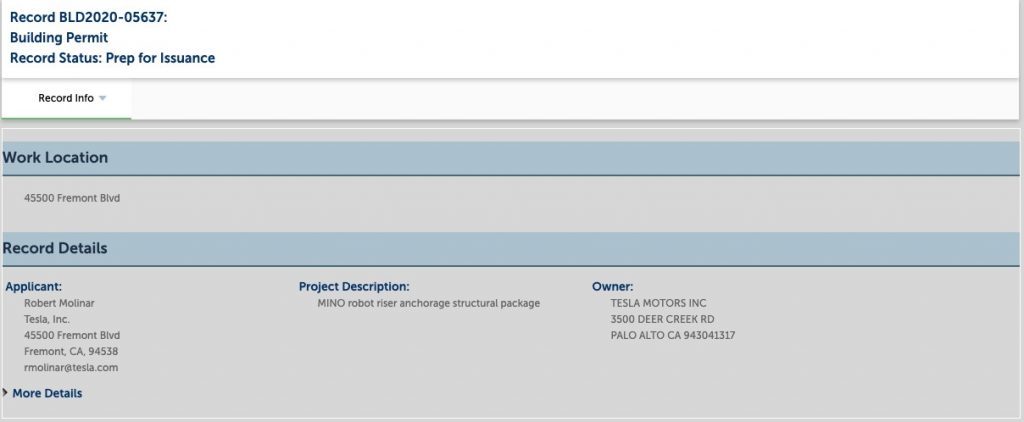

News
Tesla is gathering the pieces for an Alien Dreadnought 2.0 attempt at Fremont
Recent construction permits filed for the Fremont Factory suggest that Tesla is looking to improve the massive electric vehicle production facility’s automation even further. With the plant’s ongoing improvements, it almost seems like Tesla is about to attempt yet another crack at Elon Musk’s once-failed initiative: the “Alien Dreadnought” factory.
The Fremont factory has caught the attention of the nation in the past weeks, as Elon Musk and Tesla locked horns with officials from Alameda County who insisted that the facility remain shut even after California moved to its Stage 2 response for the ongoing pandemic. After a lawsuit, an act of bold defiance from the CEO, some strong words from a CA Assemblywoman against Musk, and support coming from both sides of the political spectrum, the plant was finally allowed to formally return to its normal operations.
But even during the shutdown, Tesla has been exhibiting signs that it intends to improve the Fremont factory. Permits for paint shop improvements were filed, for example, and similar documents were submitted for upgrades in the facility’s vehicle production lines. These lines were speculated to be allotted for Model Y production, which would allow the company to produce the all-electric crossover en masse without any issues.

Just recently, Tesla also filed building permit applications for the addition of “MINO robot riser anchorage structural package” and “MINO Equipment and fixture anchorage” for the Fremont Factory. These may seem a bit understated, though a look at MINO’s expertise provides a notable hint at what Tesla may be planning for its main EV production facility in the United States.
MINO Automation is a firm that provides fully integrated automation production systems that are tailor-fit for its clients. As per the company’s website, MINO specializes in Body in White (BIW) manufacturing systems that concentrate on body framing, laser application, sealing, hemming, resistance welding, and automated stranger systems. MINO works with FANUC Robotics as well, which are also being utilized by Tesla.

A look at Tesla’s recent building permit applications for the Fremont factory shows that the electric car maker is set on improving its plant, and it is also doing what it can to raise its automated processes. Just as Elon Musk intended during the Model 3’s initial delivery event, more automation would likely result in a smooth production ramp. This, of course, is especially important with the Model Y, Tesla’s highest-volume EV to date.
Those who have followed Tesla over the years would know that the company had already attempted an extremely-automated vehicle production approach in the past. Dubbed as Elon Musk’s “Alien Dreadnought” initiative, the program, which was intended for the Model 3, was supposed to be Tesla’s big breakthrough for vehicle production.
Alas, history would show that this was not meant to be, as issues with the over-automated line eventually forced Tesla to adopt a more human-centered approach to Model 3 manufacturing. Even Elon Musk eventually stated that humans are ultimately “underrated.”

But Tesla today is not the same as the company as it was during the early days of the Model 3’s production ramp. Today, Tesla is an experienced mass-manufacturer of electric cars, having produced thousands upon thousands of Model 3 sedans last year. And the company is nowhere near done. Over in Shanghai, Tesla China is attempting to ramp its local Model 3 production at a pace that far exceeds the company’s operations in Fremont.
With this in mind, there seems to be no better time to attempt yet another crack at a hyper-automated factory than today. The Model Y is the perfect vehicle for such an initiative, considering that the crossover is a high-volume car that’s designed to be built in a simple and efficient manner. As per the findings of automotive teardown specialist Sandy Munro, the Model Y seems to be designed for automation, from its rigid wiring systems that are friendly to robots, to its giant casts that eliminate unnecessary parts.
Time will tell if Elon Musk and Tesla are going to attempt another Alien Dreadnought for the Fremont factory. But either way, the remaining months of the year will likely see the California-based electric car production facility manufacturing vehicles at a volume that has never been witnessed before.

Elon Musk
Elon Musk and Tesla AI Director share insights after empty driver seat Robotaxi rides
The executives’ unoccupied tests hint at the rapid progress of Tesla’s unsupervised Robotaxi efforts.

Tesla CEO Elon Musk and AI Director Ashok Elluswamy celebrated Christmas Eve by sharing personal experiences with Robotaxi vehicles that had no safety monitor or occupant in the driver’s seat. Musk described the system’s “perfect driving” around Austin, while Elluswamy posted video from the back seat, calling it “an amazing experience.”
The executives’ unoccupied tests hint at the rapid progress of Tesla’s unsupervised Robotaxi efforts.
Elon and Ashok’s firsthand Robotaxi insights
Prior to Musk and the Tesla AI Director’s posts, sightings of unmanned Teslas navigating public roads were widely shared on social media. One such vehicle was spotted in Austin, Texas, which Elon Musk acknowleged by stating that “Testing is underway with no occupants in the car.”
Based on his Christmas Eve post, Musk seemed to have tested an unmanned Tesla himself. “A Tesla with no safety monitor in the car and me sitting in the passenger seat took me all around Austin on Sunday with perfect driving,” Musk wrote in his post.
Elluswamy responded with a 2-minute video showing himself in the rear of an unmanned Tesla. The video featured the vehicle’s empty front seats, as well as its smooth handling through real-world traffic. He captioned his video with the words, “It’s an amazing experience!”
Towards Unsupervised operations
During an xAI Hackathon earlier this month, Elon Musk mentioned that Tesla owed be removing Safety Monitors from its Robotaxis in Austin in just three weeks. “Unsupervised is pretty much solved at this point. So there will be Tesla Robotaxis operating in Austin with no one in them. Not even anyone in the passenger seat in about three weeks,” he said. Musk echoed similar estimates at the 2025 Annual Shareholder Meeting and the Q3 2025 earnings call.
Considering the insights that were posted Musk and Elluswamy, it does appear that Tesla is working hard towards operating its Robotaxis with no safety monitors. This is quite impressive considering that the service was launched just earlier this year.
Elon Musk
Starlink passes 9 million active customers just weeks after hitting 8 million
The milestone highlights the accelerating growth of Starlink, which has now been adding over 20,000 new users per day.

SpaceX’s Starlink satellite internet service has continued its rapid global expansion, surpassing 9 million active customers just weeks after crossing the 8 million mark.
The milestone highlights the accelerating growth of Starlink, which has now been adding over 20,000 new users per day.
9 million customers
In a post on X, SpaceX stated that Starlink now serves over 9 million active users across 155 countries, territories, and markets. The company reached 8 million customers in early November, meaning it added roughly 1 million subscribers in under seven weeks, or about 21,275 new users on average per day.
“Starlink is connecting more than 9M active customers with high-speed internet across 155 countries, territories, and many other markets,” Starlink wrote in a post on its official X account. SpaceX President Gwynne Shotwell also celebrated the milestone on X. “A huge thank you to all of our customers and congrats to the Starlink team for such an incredible product,” she wrote.
That growth rate reflects both rising demand for broadband in underserved regions and Starlink’s expanding satellite constellation, which now includes more than 9,000 low-Earth-orbit satellites designed to deliver high-speed, low-latency internet worldwide.
Starlink’s momentum
Starlink’s momentum has been building up. SpaceX reported 4.6 million Starlink customers in December 2024, followed by 7 million by August 2025, and 8 million customers in November. Independent data also suggests Starlink usage is rising sharply, with Cloudflare reporting that global web traffic from Starlink users more than doubled in 2025, as noted in an Insider report.
Starlink’s momentum is increasingly tied to SpaceX’s broader financial outlook. Elon Musk has said the satellite network is “by far” the company’s largest revenue driver, and reports suggest SpaceX may be positioning itself for an initial public offering as soon as next year, with valuations estimated as high as $1.5 trillion. Musk has also suggested in the past that Starlink could have its own IPO in the future.
News
NVIDIA Director of Robotics: Tesla FSD v14 is the first AI to pass the “Physical Turing Test”
After testing FSD v14, Fan stated that his experience with FSD felt magical at first, but it soon started to feel like a routine.

NVIDIA Director of Robotics Jim Fan has praised Tesla’s Full Self-Driving (Supervised) v14 as the first AI to pass what he described as a “Physical Turing Test.”
After testing FSD v14, Fan stated that his experience with FSD felt magical at first, but it soon started to feel like a routine. And just like smartphones today, removing it now would “actively hurt.”
Jim Fan’s hands-on FSD v14 impressions
Fan, a leading researcher in embodied AI who is currently solving Physical AI at NVIDIA and spearheading the company’s Project GR00T initiative, noted that he actually was late to the Tesla game. He was, however, one of the first to try out FSD v14.
“I was very late to own a Tesla but among the earliest to try out FSD v14. It’s perhaps the first time I experience an AI that passes the Physical Turing Test: after a long day at work, you press a button, lay back, and couldn’t tell if a neural net or a human drove you home,” Fan wrote in a post on X.
Fan added: “Despite knowing exactly how robot learning works, I still find it magical watching the steering wheel turn by itself. First it feels surreal, next it becomes routine. Then, like the smartphone, taking it away actively hurts. This is how humanity gets rewired and glued to god-like technologies.”
The Physical Turing Test
The original Turing Test was conceived by Alan Turing in 1950, and it was aimed at determining if a machine could exhibit behavior that is equivalent to or indistinguishable from a human. By focusing on text-based conversations, the original Turing Test set a high bar for natural language processing and machine learning.
This test has been passed by today’s large language models. However, the capability to converse in a humanlike manner is a completely different challenge from performing real-world problem-solving or physical interactions. Thus, Fan introduced the Physical Turing Test, which challenges AI systems to demonstrate intelligence through physical actions.
Based on Fan’s comments, Tesla has demonstrated these intelligent physical actions with FSD v14. Elon Musk agreed with the NVIDIA executive, stating in a post on X that with FSD v14, “you can sense the sentience maturing.” Musk also praised Tesla AI, calling it the best “real-world AI” today.








